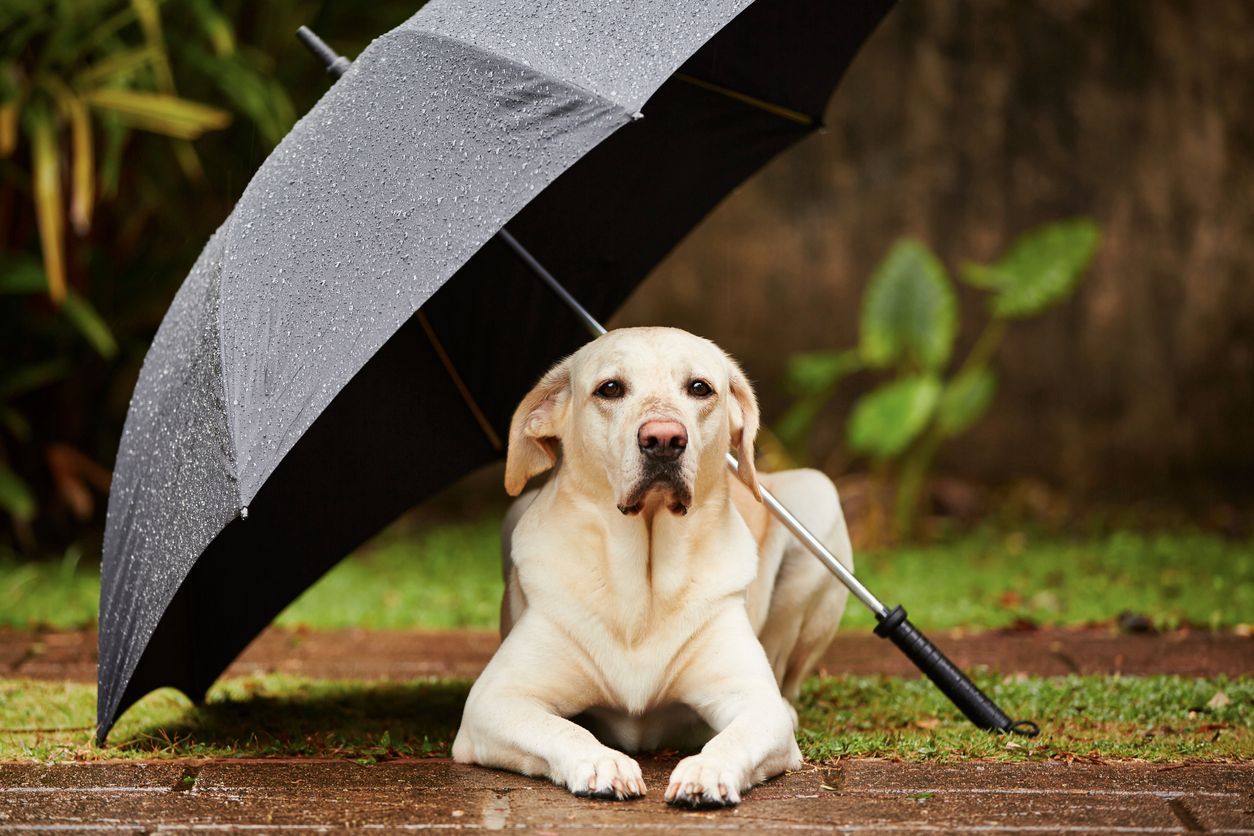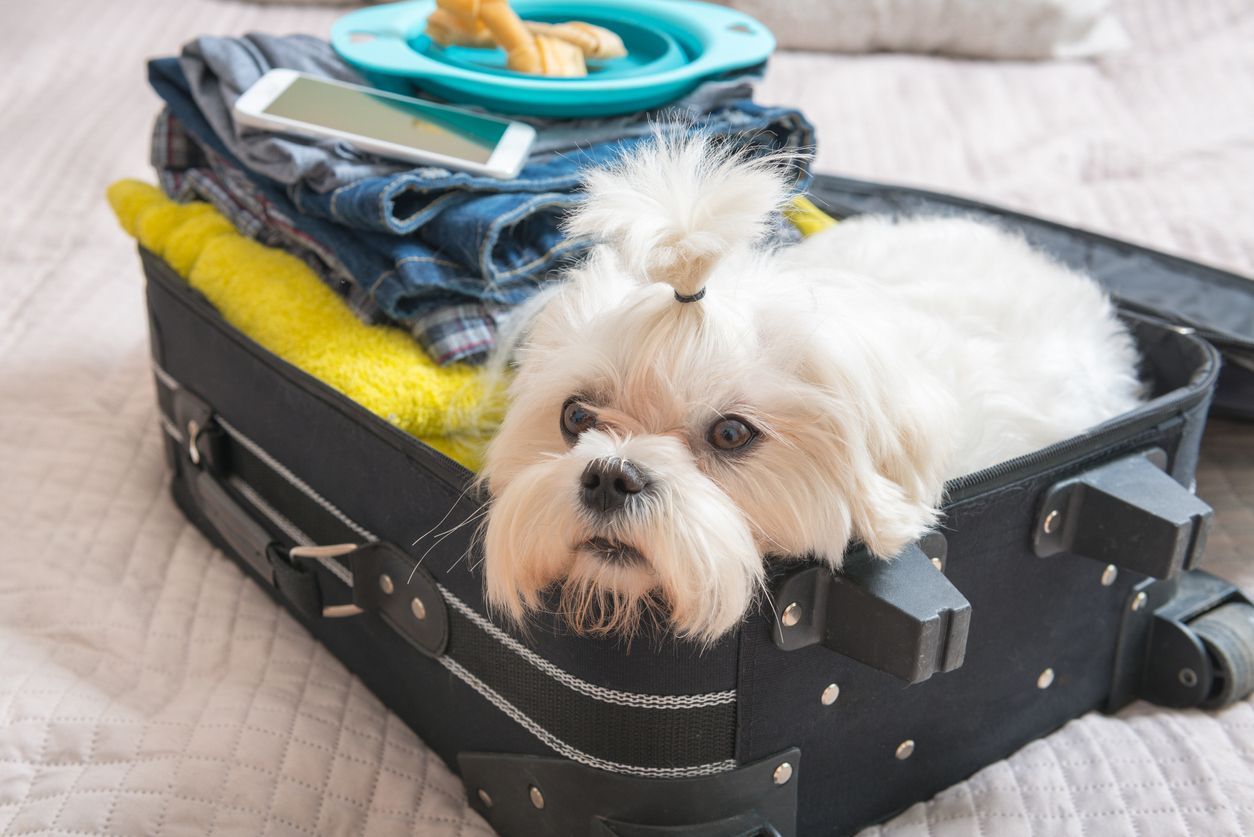6 tips for taking your dog on summer vacation

Vacation can be fun for the whole family and many dog owners prefer to bring their dogs along on their summer adventures. While many vacation activities are ideal for both humans and dogs, travel and accommodations can be a challenge. Even so, most pet owners don’t want to leave their furry friends behind. In our recent survey of dog owners, a whopping 83.3% said they would be interested in bringing their dogs with them on summer vacation, with most planning for a road trip.

The vast majority of travellers will be driving this summer. Driving may be the most convenient way to bring your dog along on summer vacation, although all modes of transportation come with their own challenges. No matter how you decide to get around together, you can use these six tips to ensure your summer vacation with your dog goes smoothly.
1. Do a practice run
If you’re planning a road trip and your dog isn’t used to being in the car, doing a test run will allow you to see what challenges you may face on a longer ride. For example, some dogs may suffer from car sickness or anxiety. Car safety is important for everyone, including dogs, and a practice run will allow your pet to get used to the car ride itself and any special car seats or harnesses you decide to use during the ride. If you’ll be flying or riding on a bus and your dog will need to be in a special carrier, get them used to the carrier before your trip.
2. Check with your vet before you go
Checking in with your vet several weeks before your trip can prevent many problems that may arise. If you will be boarding your dog at any point on your vacation, or bringing them to an international location, there may be specific health and paperwork requirements that your vet needs to sign off on. Even when you are traveling domestically, it is a good idea to check in with your vet before travel to make sure your dog is in a healthy condition to be away from home and all of their preventive health care needs are met. Travel can be stressful for humans and dogs alike, so starting on the right foot—or paw—will make you more likely to have a successful trip together.
3. Plan ahead, every step of the way
Whether you’re driving, flying, or even sailing to your vacation destination, it is important to plan ahead for both you and your dog. Not all hotels, motels, and resorts accept pets. Some roadway rest stops and driving routes may be more dog friendly than others. Airlines and buses have many policies and regulations for dogs that are constantly changing. The last thing you want on a relaxing vacation is to find out that your dog is not welcome.
4. Never leave your dog alone in a hot car
If some of your vacation activities are not suitable for your dog, or you are making a stop on a long road trip, never leave your dog alone in a hot car. While the car may seem safe and cool enough when parked in a shaded area with the windows open, temperatures inside a car can quickly rise to fatal heights. At your destination, if you will be unable to safely leave your dog at your accommodation, plan for doggy daycare or a sitter to watch them for the day when they can’t come along.
5. Stick to your home routine
Routines are comforting for dogs, so on vacation and while traveling, try to stick to their normal routine as much as possible. Keep their walks and meal times on the same schedule and make sure they get enough attention. If their routine will be significantly disrupted during the vacation, or they will be left alone in an unfamiliar location for long periods, consider if it may be better to leave them behind with a sitter or at a boarding facility.
6. Make a plan in case you get separated
When bringing your dog to an unfamiliar location, it is even more important to have a plan in case of separation. Make sure your dog’s ID tags are up to date and attached to them at all times by their collar or harness. You can attach another tag with the information of the location you will be staying at on vacation. Make sure other people are aware of your dog’s presence, such as staff at a resort or hotel. Keep your dog’s medical records with you in case of an emergency when you are not at home and ask your vet about microchipping in case you and your dog get separated.
When you can’t bring your dog
There are times when it’s not possible to bring your dog along for the adventure, or when they may be more comfortable at home. While your dog will surely miss you while you’re gone, many dogs will be perfectly fine with people or environments they recognize and know are safe. If your dog will be staying with an unfamiliar person or at an unfamiliar place while you are away, try to make an introduction before going on your trip. If you’re worried your dog might have a hard time adjusting to any changes caused by your vacation, plan ahead so you both have the time you need to see what works best and adjust. Book an online virtual care appointment to get advice on the best steps to take when your dog has to stay behind.




